Instructions on how to tie up cucumbers in a greenhouse correctly for novice gardeners
Besides feeding and regular watering cucumbers need a garter. The formation of fruits in the greenhouse allows you to competently control the growth rate of plants and regulate the volume of the crop due to compliance with temperature conditions, humidity and light.
Garter cucumbers in the greenhouse prevents the loss of some vegetables at the stage ovary formation, simplifies maintenance and harvesting.
The content of the article
Why tie cucumbers in a greenhouse
Cucumbers grow quickly and intertwine with branches, so it is necessary to tie them up to evenly distribute the bushes, as well as get the maximum yield. Tying cucumbers prevents rotting of immature fruits and reduces the risk of diseases.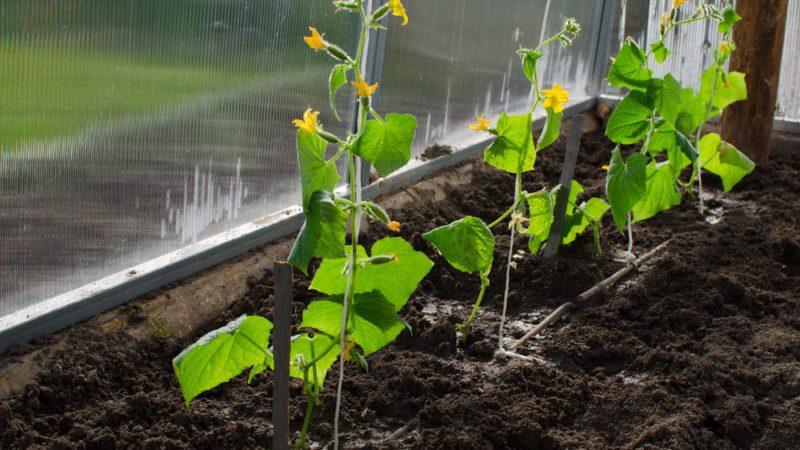
The cucumber garter has several advantages:
- free access to the bushes when watering and harvesting;
- direct sunlight on plants improves their growth;
- simplifies the procedure for artificial pollination of flowers and the direction of the antennae in the right direction;
- maximizes yield thanks to the safety of the ovaries;
- facilitates the process of removing stepchildren from the plant;
- weed removal becomes a convenient procedure;
- hinders decay leaves and fruits;
- diseased and dried leaves are removed without difficulty;
- the tied cucumbers do not shade each other.
Is it possible to do without a garter
Many gardeners bypass the procedure for tying cucumbers, trusting their natural growth. Such cultivation is permissible, but in this case the cons will be visible on the face.
Braided cucumbers cover the entire planted area, which makes watering at the root difficult and increases the risk of leaf and shoot rot. In contact with the soil, the plant becomes more susceptible to diseases and pests... In any case, the choice remains with the gardener.
Features of binding in a greenhouse made of polycarbonate and other materials, in a greenhouse

Garter cucumbers in a greenhouse, polycarbonate greenhouse, glass or film is a great way to speed up the ripening of crops in your summer cottage. However, you need to take into account the peculiarities of the binding of greenhouse vegetables:
- In a greenhouse, plants require more careful maintenance than in an open field, since the air temperature and humidity are higher. Therefore, you need to take care of air circulation in the room, otherwise the stagnation of moisture will have a detrimental effect on the yield of cucumbers or lead to their deterioration.
- It is recommended to tie up plants grown in a greenhouse made of polycarbonate and other materials when the plant reaches a certain maturity.
- It is not recommended to carry out the binding procedure later than the fourth week after landingas the shoots will become brittle and anchoring will become much more difficult.
- The greenhouse assumes the presence of built-in elements that can be used to pull the base (arch) and fasten the cucumber stalks.
- It is better to tie the twine to the escape not tightly, but leaving a small gap. This ensures a full supply of nutrients to the fruit.
- Too close contact of the plant with the element on which it will rely is undesirable. The escape itself will wrap itself around any structure, it is enough to provide a touch for some time.
- The support should not be too rough and not damage the delicate lashes.
- The cucumber garter allows you to use the greenhouse area as efficiently as possible by raising the lashes up.
- When making a greenhouse on your own, it is better to think in advance about the possibility of binding the supports to the upper elements of the frame. In this case, there will be no need to install vertical supports.
When to do it
When the stems have reached 30 cm, the cucumbers can be tied up. By this time, up to 5-6 true leaves will be formed on the plant. Timely installation of supports will help to avoid damage to the root system, until it is overgrown. The procedure is best done in the morning before midday heat.
Important! Tying should not be allowed at a later date, as long and brittle lashes can be damaged.
What is needed: materials and tools
By the time the cucumbers are tied, it is necessary to prepare in advance the materials for the construction of supports, which must firmly fix the stem.
To tie cucumbers you will need:
- metal or wooden posts about 2 m long;
- strong wire or twine;
- metal or plastic mesh;
- hooks for fastening the material;
- strips of fabric 3-5 cm wide;
- wooden pegs;
- a hammer;
- nails;
- pliers.
Garter techniques
There are many methods of tying cucumber crops, depending on the type of structures used.
The most common methods are:
- vertical;
- horizontal;
- mixed.
Vertical
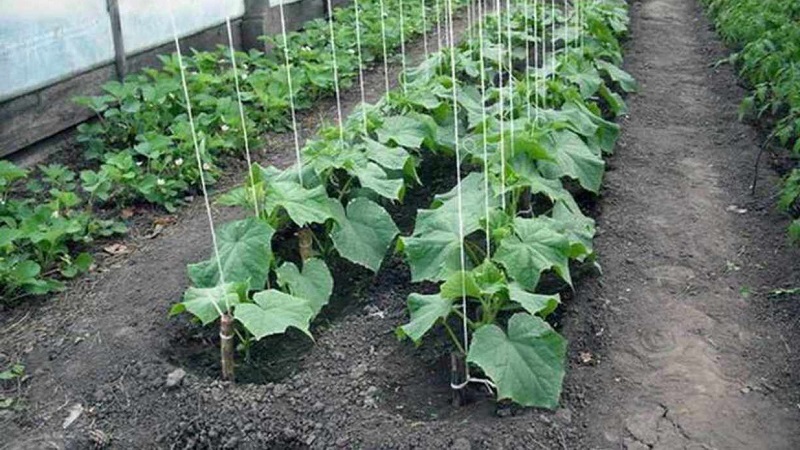
With the vertical tie method, it is possible to provide light access from all directions to the plant thanks to the construction reaching 2 m in length. This garter is used when growing cucumbers in tall greenhouses.
A frame structure is made in such a way that the upper part is located above the ceiling, and the lower one is on the ground. Ropes are pulled through the slats along which cucumbers will curl. There should be as many ropes as there are bushes. To avoid overgrowth of side shoots, they should be tied up with strips of fabric.
A simplified version of the vertical structure is to pull the rope onto hooks that are attached to the ceiling base. Pegs are driven into the soil, ropes are attached to them.
Reference. If wooden parts are used for fastening, they must first be treated with a salt solution mixed with an anti-rotting agent.
Horizontal
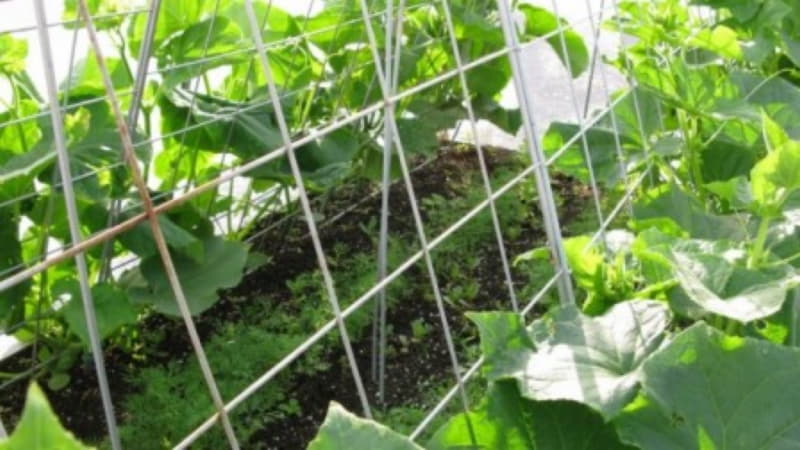
This method is widely used in small greenhouses.
Metal or wooden pegs up to 2 m long are driven in along the edges of the beds. Twine or wire is pulled through the pegs, the gap between which is 25 cm. The number of ropes is regulated depending on the number of cucumber bushes.
The disadvantages of horizontally tying seedlings are that the plexus between the bushes cannot be completely avoided, as well as the sagging of the stems when they reach the uppermost twine. Therefore, it is better to drive in pegs longer than 2 m or cut off the tops of the stems when they grow to the border of the upper support.
Mixed
When planting cucumbers in a circle, a mixed method of tying cucumbers is used.
The procedure is performed in two stages.
- 10 pegs are driven into the soil and connected with their tops.
- A mesh is pulled over the resulting cone. A mustache of cucumber seedlings is brought out into the holes of the grid.
As weaving, the structure is transformed into a hut of cucumbers.
Important! It is better to install a cone for weaving cucumber crops before planting seedlings. Otherwise, you risk damaging the root system and plant leaves.
What to tie up
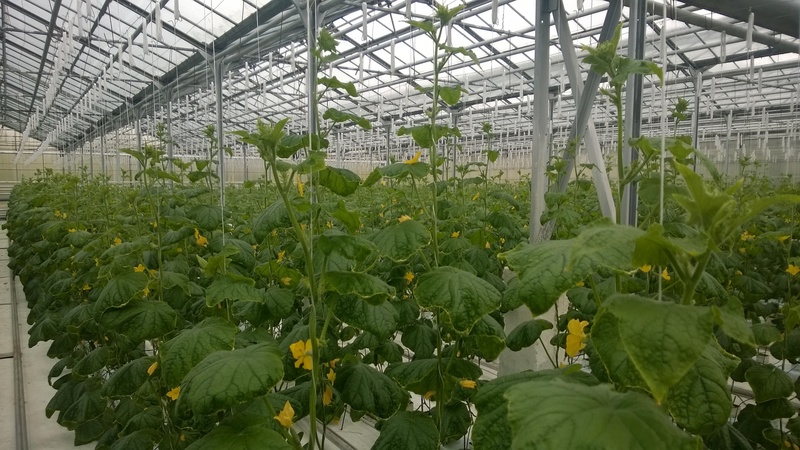
Various materials are used for tying cucumber bushes:
- Twine... The material is easy to use, does not rot. The twine is installed vertically, attached from above to the profile of the greenhouse, and from below to a peg. The lashes are not very tightly fixed under the second or third sheet at a distance of 30 cm from the ground.
- To the hedge. So less often cucumbers are tied up, but the device is convenient to use. A strong net, placed on high stakes, is pulled along the cucumber row. With the help of a rope, the bushes are attached to the net. Cucumber stems can be fixed at different levels as they grow.
- On the arc. It is very convenient to tie cucumbers to arcs that are placed over the cucumbers. To create such a simple device, bent rods are used, which are placed near each cucumber row. The stems of the plant are attached to a support with stretched ropes.
- On the grid. Modern gardeners successfully use a net for tying cucumbers. It is better to give preference to a mesh with holes of at least 10 cm. It can be plastic or in the form of a metal mesh fence along which vegetables will trail.
- On the trellises. The trellis structure is more practical and reliable, as it includes additional supports that help to hold large volumes of ripe fruits. Depending on the needs and varieties of cucumbers, a trellis of any shape is selected.
How to tie cucumbers in a greenhouse correctly
To achieve a bountiful harvest, novice gardeners need to learn how to tie cucumbers correctly.
Training
You need to prepare for the garter procedure in advance by constructing a structure for cucumbers before planting. Pegs must also be driven in just before planting cucumbers, near the hole under each bush.
Garter instruction
Consider the step-by-step instructions for garter cucumbers, performed vertically using twine:
- First of all, they get rid of shoots and ovaries at the level of 3-4 leaves at the bottom of the stem. This is necessary for the normal development of the root system in the future.
- At the level of the next three leaves, side shoots are removed without touching the ovary. Shoots must be removed immediately so as not to provoke various diseases in cucumbers. In some cases, remove all leaves up to the first fruit, leaving only leaves with ovaries.
- In the area of the next three leaves, ovaries with cucumbers are left, allowing lateral shoots to develop. After one ovary and one leaf have formed on the shoot, they pinch it, treating these places with a solution of potassium permanganate.
- Then the shoots in the region of the next three leaves are formed in a similar way, leaving two leaves and two ovaries. And so on increasing: the higher the leaves are, the more ovaries need to be left.
- When the first fruits appear on the stem at the bottom, they are immediately harvested, removing the lower leaf plates.
- When the central whip reaches the upper level of the twine, it is untied, lowering the plant down. By such actions, space is freed up for the growth of the cucumber culture upwards.
If you do not pinch the cucumbers, the leaves will fill the entire space of the greenhouse and will take away nutrients.
Mistakes to Avoid
Novice summer residents should take into account the errors that may occur when tying:
- Late garter. If the bush grows more than 35 cm, its stem will become tough and brittle. The garter during this period can damage the plant.
- Tying tight. By creating too strong anchorage of the whip, you can provoke squeezing of the stem as it grows.
- It is best not to use too strong metal clips to avoid damaging the plant.
- The uncontrolled development of cucumber bushes can lead to growth in an unnecessary direction and collapse of the top in the future.
- It is popularly believed that you cannot curl the stem counterclockwise, since all plants follow the movement of the sun.
Tips from experienced summer residents
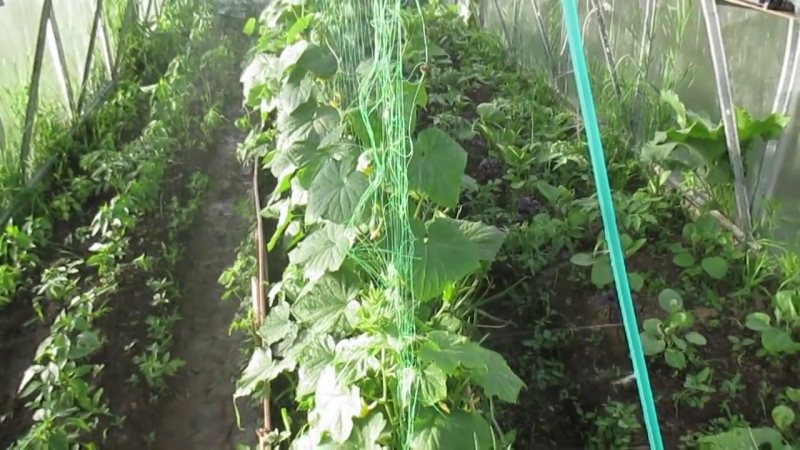
Experienced summer residents share valuable tips for garter cucumbers:
- Bushes need to be tied up only when there are already at least six leaves on the stem.
- If you want to grow other vegetables in the greenhouse, you need to fence them off from each other with a film curtain.
- Damaged fruits must be removed before the plant is fully ripe.
- Remember to treat the ends of the pegs before immersing them in the ground with a disinfectant solution such as potassium permanganate.
- In order not to injure the plant, create an angle of 60º between the stem and the shoots.
- The best pegs are made of plastic or wood.
Conclusion
The yield characteristic directly depends on whether the cucumbers are tied or not. Depending on preferences and conditions for the future harvest, cucumbers are tied in a vertical, horizontal or mixed way. Each individual chooses the appropriate method of tying cucumbers, combining them or using them separately.